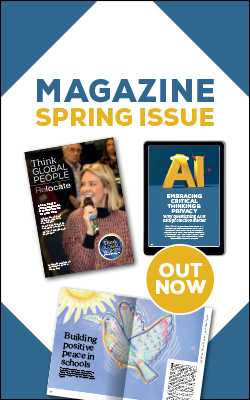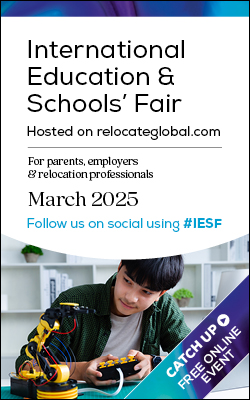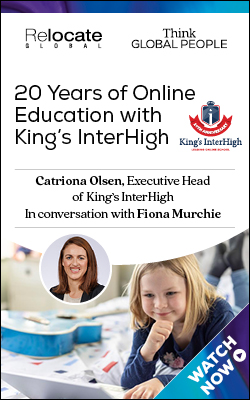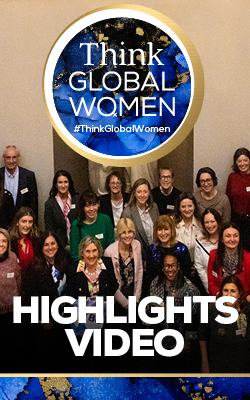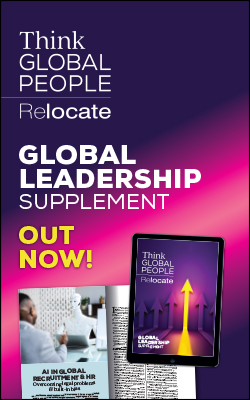The future of the global mobility function: Learning from HR’s evolution
In the second part of her analysis of the future of the global mobility profession, Dr Sue Shortland considers further lessons that can be learned from the history of HR’s evolution from its reactive personnel management background into its strategic role today.

This article is taken from the Autumn 2024 issue of
Think Global People magazine
Click on the cover to access the digital edition.The development of human resources management over several decades presents valuable learning opportunities for global mobility professionals. Early academic analysis and commentary placed considerable emphasis on the progression towards more interventionary and strategic activities. The seminal work of academic John Storey, for example, suggested that for personnel managers to take a more strategic role, there should be less focus on administrative activities (seen as non-interventionary and tactical) with far greater attention paid to playing an active (interventionary) and forward-thinking (strategic) role in people management.Interestingly, later academic research, such as that from the management guru Dave Ulrich, took a slightly different focus by recognising the need for HR to deliver at the administrative and functional levels, not just at the strategic. Indeed, global mobility professionals know the value they add at the administrative level and by no means would they think of minimising its importance. However, they do want to increase their strategic presence.Ulrich has long been held up by HR’s professional bodies and membership as an important commentator on HR’s evolution from its personnel management background. So, it is sensible for global mobility professionals to consider Ulrich’s ideas to see how these can align with the strategic goal of becoming a true strategic business partner and to take lessons from them.
Combining administrative excellence with strategic objectives
Ulrich first proposed that HR practitioners fulfilled four main roles:- Administrative expert: this concerned the design and efficient delivery of HR processes
- Employee champion: this concerned the day-to-day needs of employees, such as maintaining the psychological contract and being involved in people development
- Strategic partner: this concerned aligning HR and business strategy
- Change agent: this involved managing transformation and cultural change.
- Functional expert: being a centre of excellence
- Employee advocate and human capital developer: focusing on employee voice, wellbeing and people development clearly identified as a separate role, recognising its value
- Strategic partner: including organisational diagnosis and ensuring capacity for change.
Read related articles
- Global mobility professionals: Looking to the future by learning from HR’s past
- Transforming the global mobility function
Relevance to the global mobility profession
This early HR thinking is helpful to global mobility professionals today because it recognises the importance of being an administrative or functional expert as well as being a champion of the employee experience. If employees have an excellent employee experience on assignment, then this plays a part in human capital development. In turn, this feeds into the strategic nature of talent deployment.The role of strategic partner and change agent are intertwined with the strategic partner function, tying into the development of human capital as part of business strategy, while the change agent role is involved in facilitating and managing cultural change. With their expertise in cultural understanding, global mobility professionals are well set up to assist with change management as organisations enter new cultural environments.Global mobility’s role in managing both employees and families on the move, and in communicating with these groups during their assignment, helps to cement its capability in managing employee voice and wellbeing. These aspects are inextricably tied into talent development and deployment – a strategic function.The three-legged stool or three-box HR model
HR professional bodies have adopted the work of Ulrich and promoted HR’s role through what has become known as the three-legged stool/three-box model:- HR centres of excellence: usually small expert teams with specialised knowledge of HR solutions whose role is to help deliver competitive advantage through the HR pillars of reward, learning, engagement and talent management.
- HR shared services: usually a single large unit that handles routine transactional services across the business, such as payroll, absence monitoring, recruitment administration and advice on simpler employee relations issues. The remit is to provide low-cost effective HR administration.
- HR business partners or strategic partners: comprising a few senior or key HR professionals who work closely with business leaders or line managers and are often embedded in the business unit. Their role is to influence and steer strategy and play a part in its implementation. The aim is to ensure that the business makes the best use of its people and to determine how – and ensure that – HR strategy best meets organisational needs.
Implications for global mobility professionals’ strategic quest
Global mobility already has the advantage of being a centre of excellence. Global mobility is often organised as small teams of experts with specialist knowledge through which the function delivers competitive global mobility solutions. Nevertheless, the administrative aspect should not be underplayed because routine transactional services underpin success.Low cost but highly effective solutions are vital to achieving competitive business outcomes. So, while global mobility professionals may desire to leave these duties to others via outsourcing using shared services – for example, through third-party service providers that can fulfil multiple administrative tasks – it is important to remember that administrative expertise underpins the employee experience. Rather than rely completely on outsourcing, building partnerships with service providers can help to provide detailed understanding and information that can provide the bedrock for advisory services and strategic actions.Business partnering involves global mobility professionals working with – and sharing responsibility for – policy and practice with line management colleagues. Global mobility professionals need to adopt a similar approach to their HR colleagues by working alongside line management. By doing so, they will gain a more strategic overview and input into business operations.Practical actions to achieve strategic objectives
Global mobility professionals will need to consider how they can achieve a strategic role through direct action. Lessons again can be learned from the HR function. It is suggested within the academic HR literature that a strategic role can be facilitated through the use of appropriate business and financial language and by articulating the rationale for activities undertaken in terms of added value to the business.Global mobility professionals will need to act as business managers first, taking a strategic overview and concentrating on priorities as defined by the business. They will need to understand the business they work in, taking into account perspectives from both the home and host countries. They must display business acumen and will need to develop and offer change management skills. They must also use relationship building and networking skills to best effect.Strategic thinking will be needed with communication and relationships embedded in business units. In this way, global mobility professionals can work closely with business leaders at a local level to influence, develop and help implement global mobility strategy.To become a future strategic partner, global mobility professionals must ensure that the business makes best use of its people. Ensuring an excellent employee experience is crucial here. Working directly with the line and with HR colleagues as necessary, global mobility professionals have a bright future in terms of making the transformation to a more strategic role.
Find out more about the Think Global People and Think Women community and events.

Subscribe to Relocate Extra, our monthly newsletter, to get all the latest international assignments and global mobility news.Relocate’s new Global Mobility Toolkit provides free information, practical advice and support for HR, global mobility managers and global teams operating overseas.
©2025 Re:locate magazine, published by Profile Locations, Spray Hill, Hastings Road, Lamberhurst, Kent TN3 8JB. All rights reserved. This publication (or any part thereof) may not be reproduced in any form without the prior written permission of Profile Locations. Profile Locations accepts no liability for the accuracy of the contents or any opinions expressed herein.







